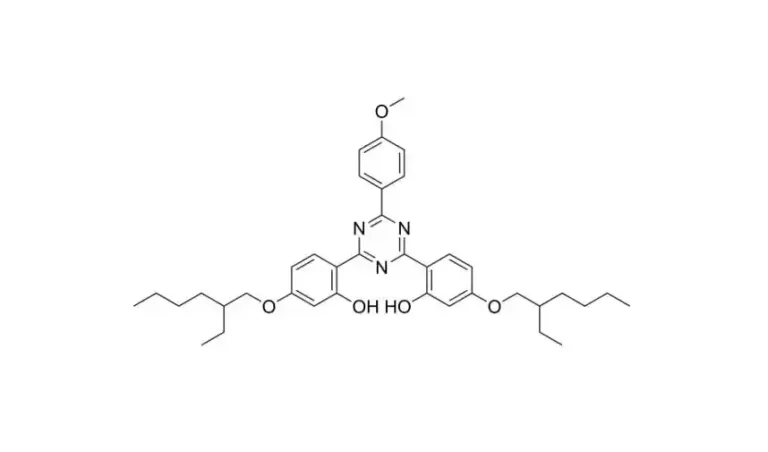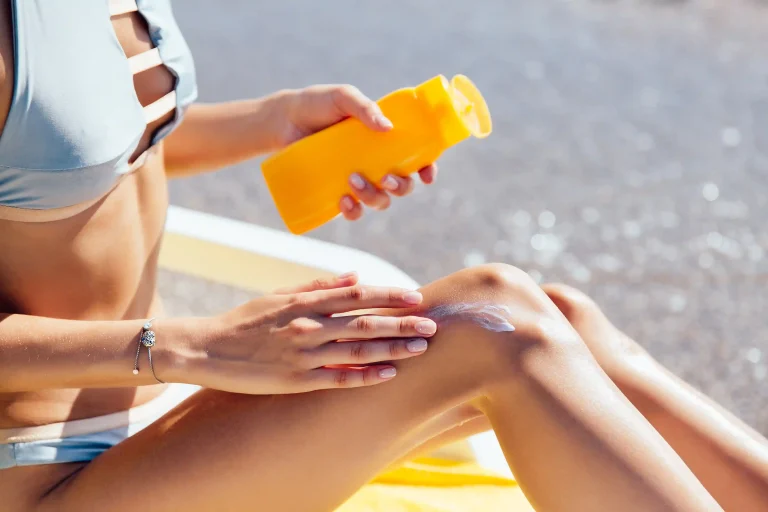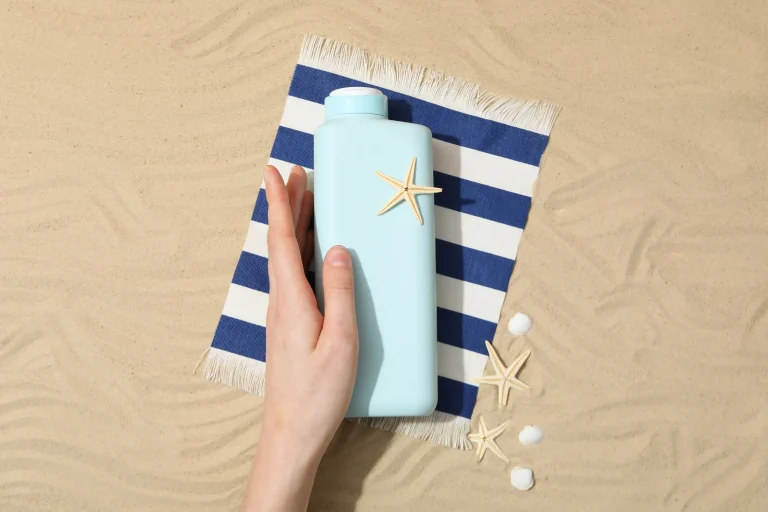Sunscreen is a daily essential for protecting your skin. But lots of folks worry about what’s in it, especially titanium dioxide. They want something that keeps them safe from the sun without causing health problems or hurting the planet. Questions about titanium dioxide sunscreen pop up all the time, particularly around nano versus non-nano particles. Are they risky?
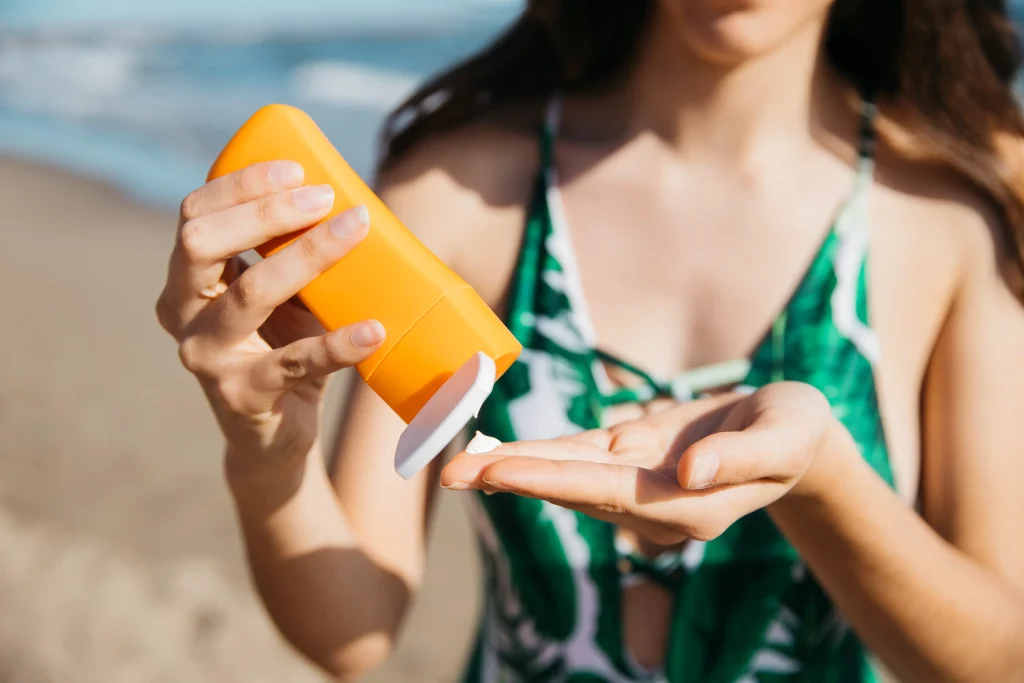
This blog digs into the facts, busts some myths, and shines a light on the high standards behind top-notch titanium dioxide products, like those made by Shanghai BFP New Material Co., Ltd. (BFP).
What’s Titanium Dioxide and How Does It Help Your Skin?
Titanium dioxide is a mineral found in nature. It’s used in titanium dioxide sunscreen as a physical block. Unlike chemical sunscreens that soak up UV rays and turn them into heat, titanium dioxide sits on your skin like a shield. It reflects UVA and UVB rays away. This makes it awesome for blocking both types of harmful rays. Plus, it’s super gentle, so it’s a favorite for people with sensitive skin who might get itchy or red from chemicals like oxybenzone.
Why Titanium Dioxide Is a Top Pick for Sunscreen
- Blocks All Rays: Stops UVA (which ages skin) and UVB (which burns).
- Kind to Skin: Doesn’t usually cause rashes or allergies. Perfect for touchy skin.
- Holds Up in Sun: Stays strong under sunlight, so you’re protected all day.
Even so, some people aren’t sure about titanium dioxide sunscreen. They wonder about particle sizes—nano versus non-nano. Can these tiny bits get into your body? Are they bad for the environment? Let’s break it down.
Nano vs. Non-Nano Titanium Dioxide: What’s the Difference?
A lot of the chatter about titanium dioxide sunscreen is about particle size. Nano particles are super tiny, less than 100 nanometers. Non-nano ones are bigger, over 100 nanometers. Nano versions make sunscreen look clear on your skin, which is nice. But are they safe to use?
What Makes Nano Titanium Dioxide Special?
Nano titanium dioxide is so small it blends right into your skin. You don’t get that white, chalky look. It’s why many sunscreens use it—it feels smooth and looks invisible. But because the particles are so tiny, some folks worry they might slip deep into the skin.
Is Non-Nano Titanium Dioxide the Safer Bet?
Non-nano titanium dioxide has bigger particles. They stay right on top of your skin, bouncing UV rays away. Since they don’t go inside, they ease a lot of concerns. The downside? They can leave a white film, which isn’t always great, especially if you have darker skin.
| Feature | Nano Titanium Dioxide | Non-Nano Titanium Dioxide |
| Particle Size | Tinier than 100 nm | Larger than 100 nm |
| How It Looks | Clear, no white mark | Might leave a white film |
| UV Protection | Stops UVA and UVB | Stops UVA and UVB |
| Skin Absorption | Stays on the top layer | Sits on the surface |
| Feel and Look | Smooth, blends easily | Can look a bit chalky |
Busting Myths About Titanium Dioxide Sunscreen
There’s a ton of wrong info out there about titanium dioxide sunscreen. Some of it comes from old studies or overhyped stories. Let’s set the record straight with facts.
Myth 1: Nano Titanium Dioxide Sinks Deep into Your Skin
Truth: Big groups like the Australian Therapeutic Goods Administration (TGA) and the FDA have studied this. They found that both nano and non-nano titanium dioxide stay on your skin’s top layer. That’s just dead skin cells. A 2018 study showed even nano particles don’t go deeper, not even on scratched or damaged skin.
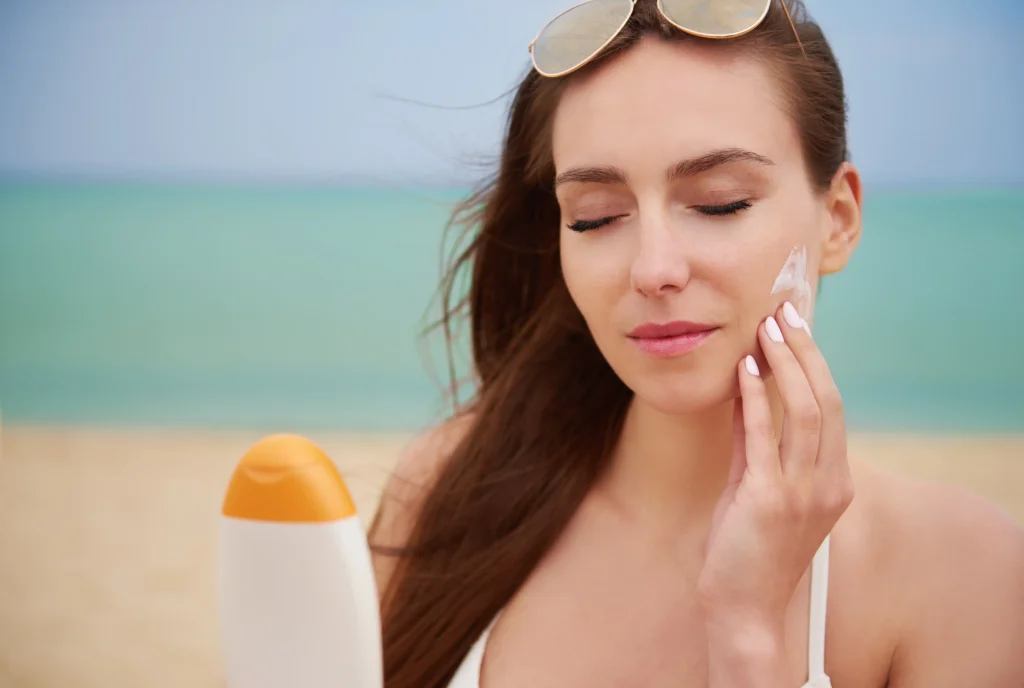
Myth 2: Nano Titanium Dioxide Causes Cancer
Truth: The International Agency for Research on Cancer (IARC) said titanium dioxide could be a cancer risk if you breathe it in as dust, like in factories. But in sunscreen, you rub it on your skin. No dust, no breathing it in. Studies say there’s no cancer risk when you apply titanium dioxide to your skin.
Myth 3: Titanium Dioxide Wrecks the Environment
Truth: Some chemical sunscreens, like oxybenzone, hurt coral reefs. Titanium dioxide is much gentler on nature. Non-nano particles are even better. Many sunscreens use coated nano particles to lower any possible harm to oceans or wildlife.
Myth 4: Chemical Sunscreens Are Better Than Titanium Dioxide
Truth: Chemical sunscreens, like oxybenzone, get into your blood. That makes some people nervous about health issues. But titanium dioxide sunscreen stays on your skin’s surface. It’s a safer pick for everyday use. The FDA calls titanium dioxide safe and effective.
Science Says Titanium Dioxide Is Safe
Lots of research backs up titanium dioxide sunscreen as safe when used the right way. Here’s what the experts found:
- Stays on Top: A 2018 study and FDA tests showed nano titanium dioxidedoesn’t go past your skin’s outer layer. It stays put, even after you slather it on multiple times.
- Low Risk: Tests on cells and animals show titanium dioxidenanoparticles in sunscreen don’t cause harm. They’re coated with stuff like silica to keep them stable and safe.
- Approved by Experts: The FDA, EU, and TGA all say titanium dioxideis okay for sunscreens. The EU limits it to 25% in cosmetics. It has to be pure and made carefully.
These facts show titanium dioxide is a solid, safe choice when it’s made well.
BFP: A Top-Notch Titanium Dioxide Maker
Shanghai BFP New Material Co., Ltd. (BFP) is a leading name in making titanium dioxide for sunscreens and cosmetics. They care about safety, quality, and the planet. Their product, Titanium Dioxide BFP-T20SD, gives strong UV protection and works smoothly in all kinds of sunscreen formulas. BFP sticks to tough global rules, so their titanium dioxide is a go-to for brands and people who want dependable, safe ingredients.
FAQs About Titanium Dioxide Sunscreen
Q1: Can Titanium Dioxide Nanoparticles Get Inside Your Body?
A: Nope. Studies show titanium dioxide nanoparticles stick to the top layer of dead skin cells. They don’t go deeper, so they’re safe for rubbing on your skin.
Q2: Is It Okay to Use Titanium Dioxide Sunscreen Every Day?
A: Totally. Titanium dioxide sunscreen is safe for daily use. Big groups like the FDA and EU say it’s fine. It holds up in sunlight and doesn’t bother your skin.
Q3: Does Titanium Dioxide Sunscreen Leave a White Mark?
A: Nano titanium dioxide blends in without a white mark. Non-nano versions might leave a slight film. Newer formulas make this less of a problem, even for darker skin tones.
Q4: Is Titanium Dioxide Sunscreen Bad for the Planet?
A: Compared to chemical sunscreens like oxybenzone, titanium dioxide is much better for nature. Coated nano particles lower risks. Non-nano ones are even safer for oceans. Pick reef-safe sunscreens to be extra kind to the environment.
Go for Safe, Strong Sun Protection
Titanium dioxide sunscreen is a smart way to keep your skin safe from the sun. Science shows it’s safe and does its job well. It clears up worries about nano and non-nano particles. Choosing the Right Sunscreen.

